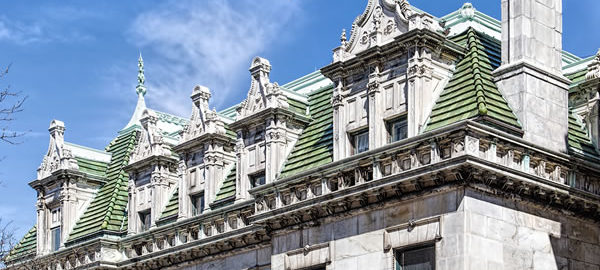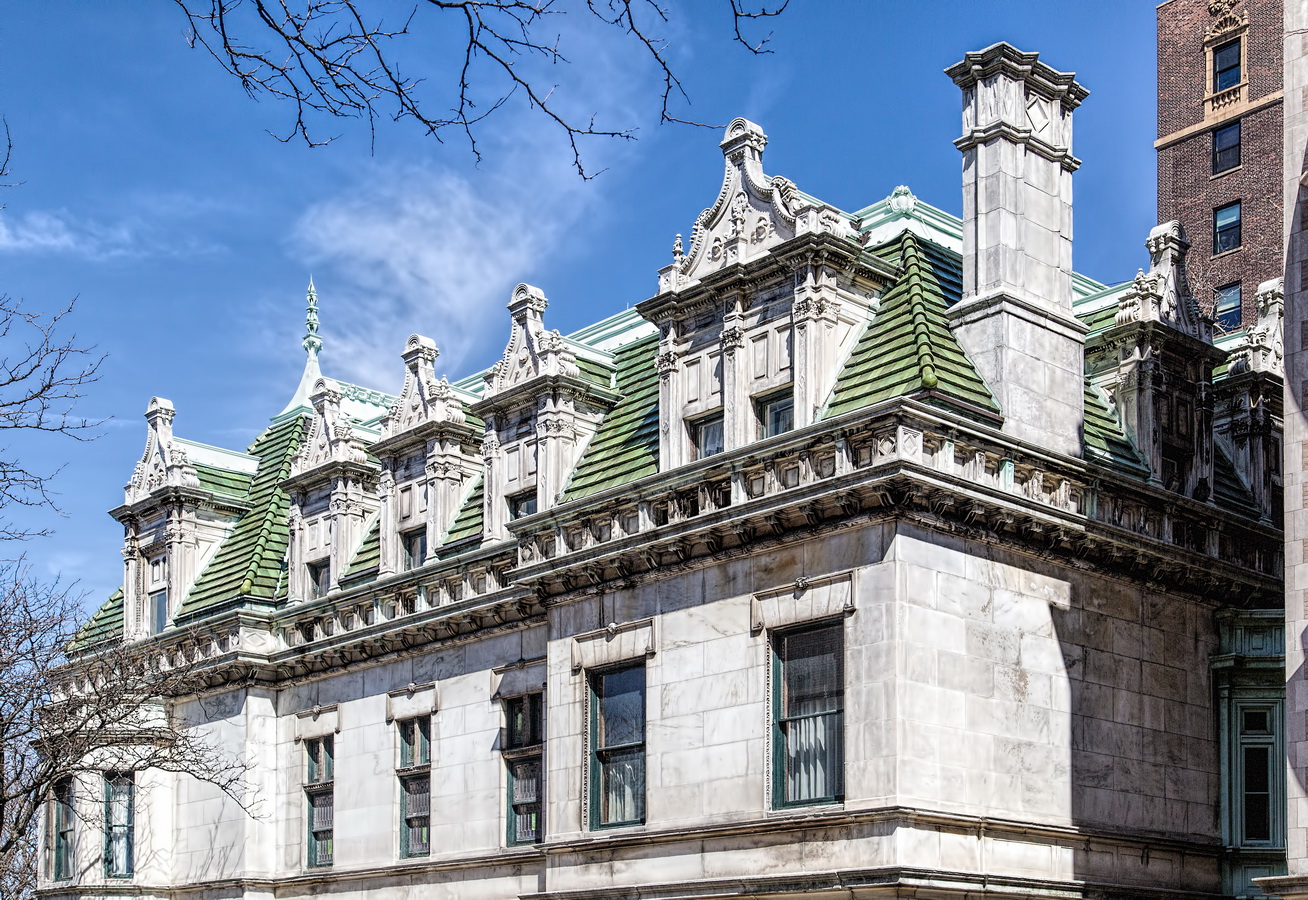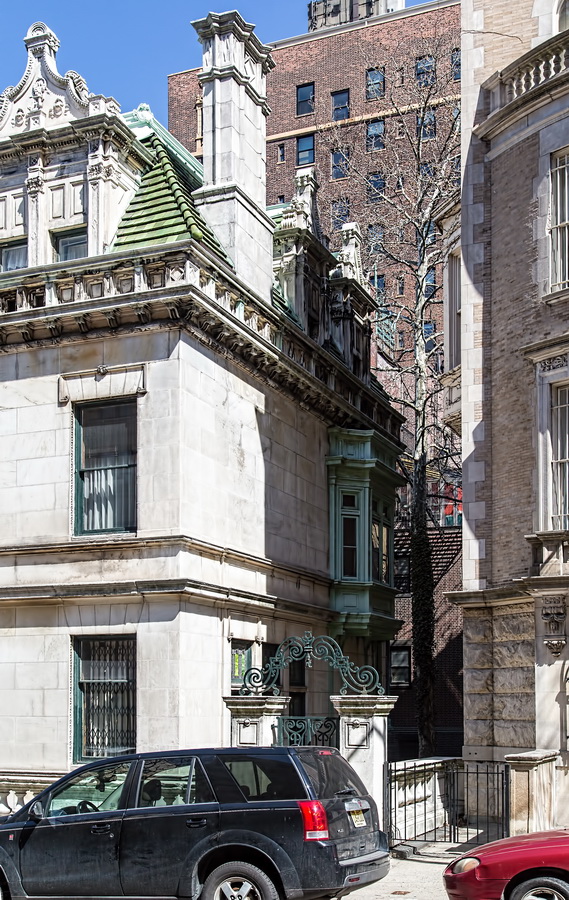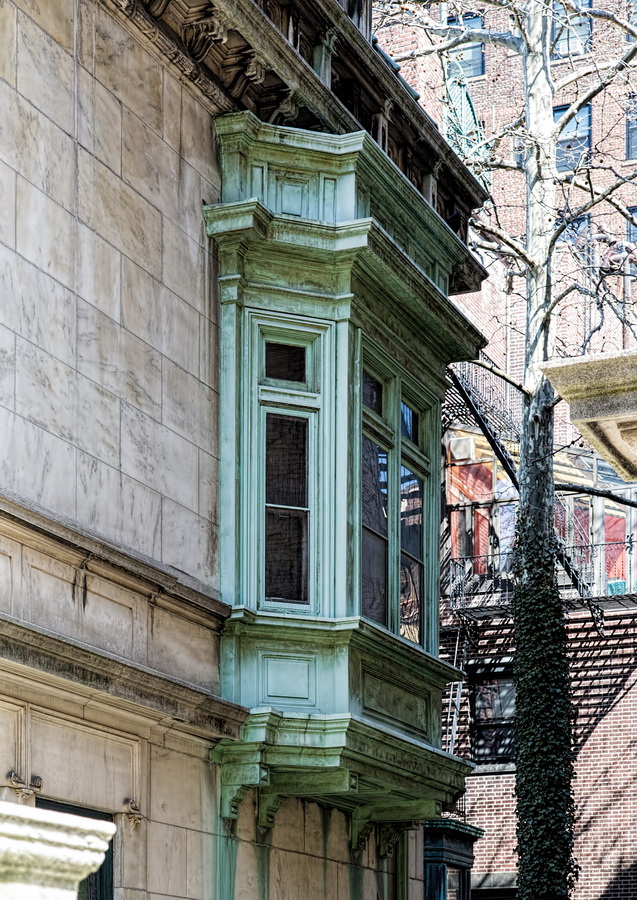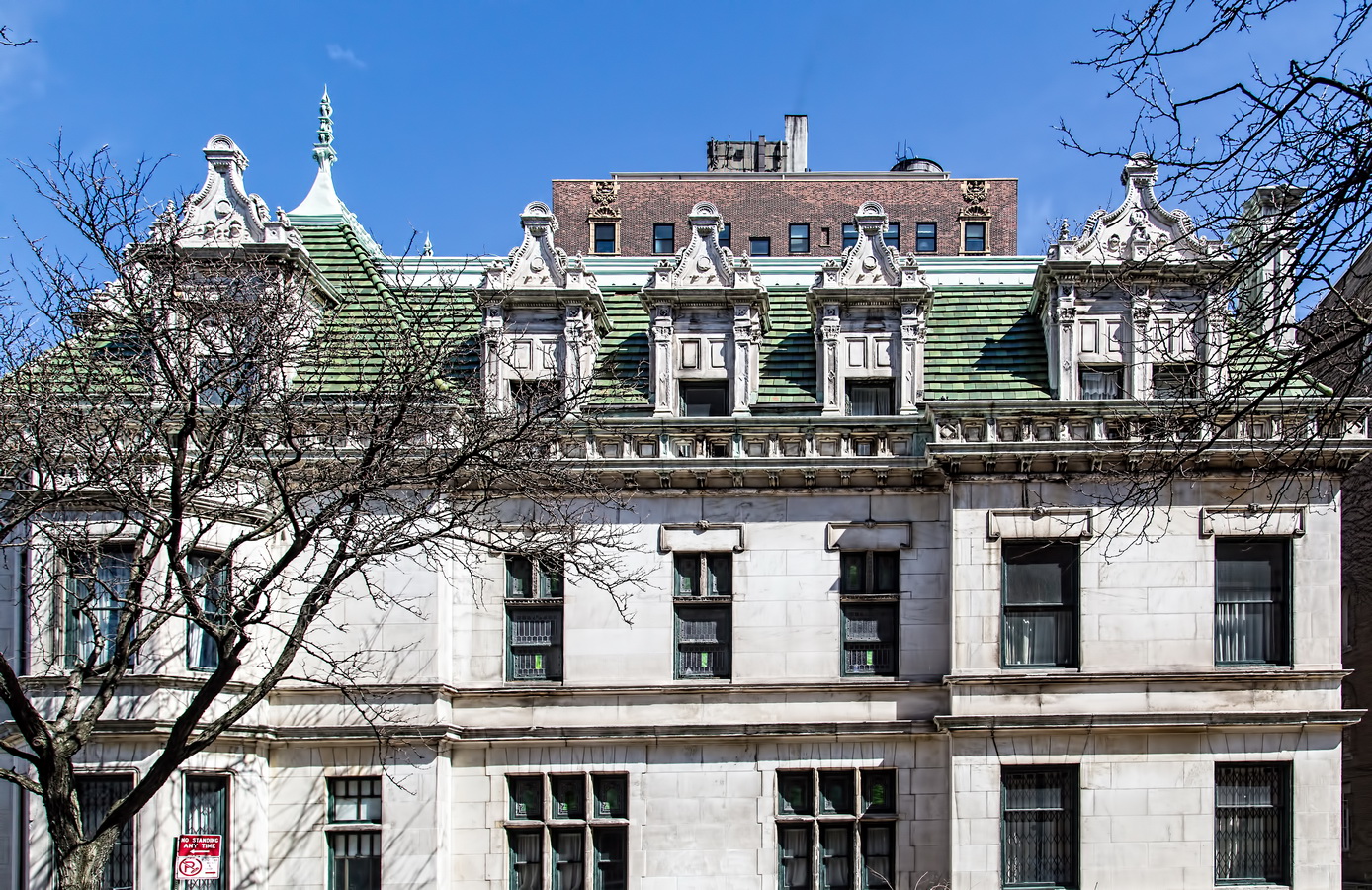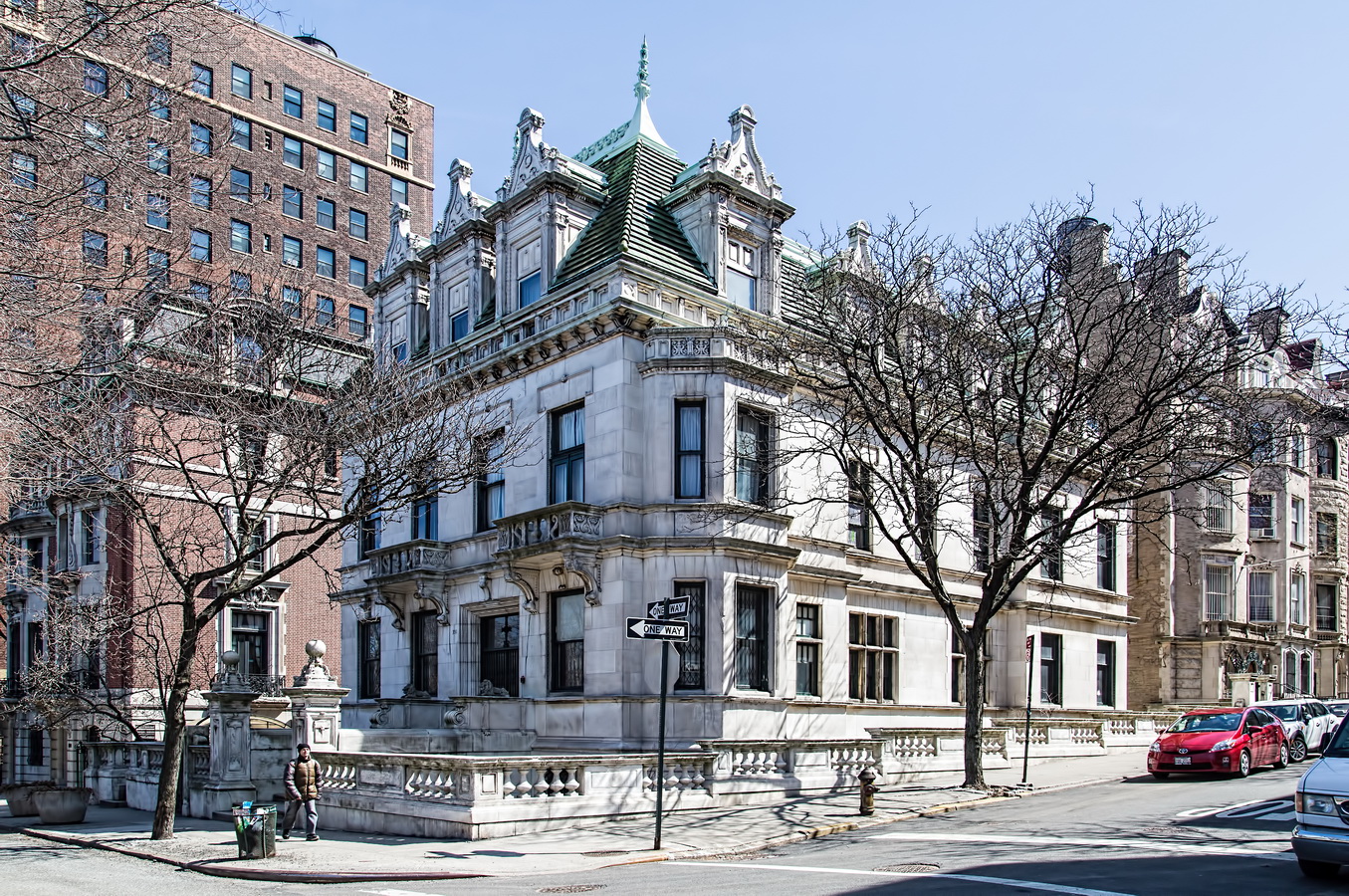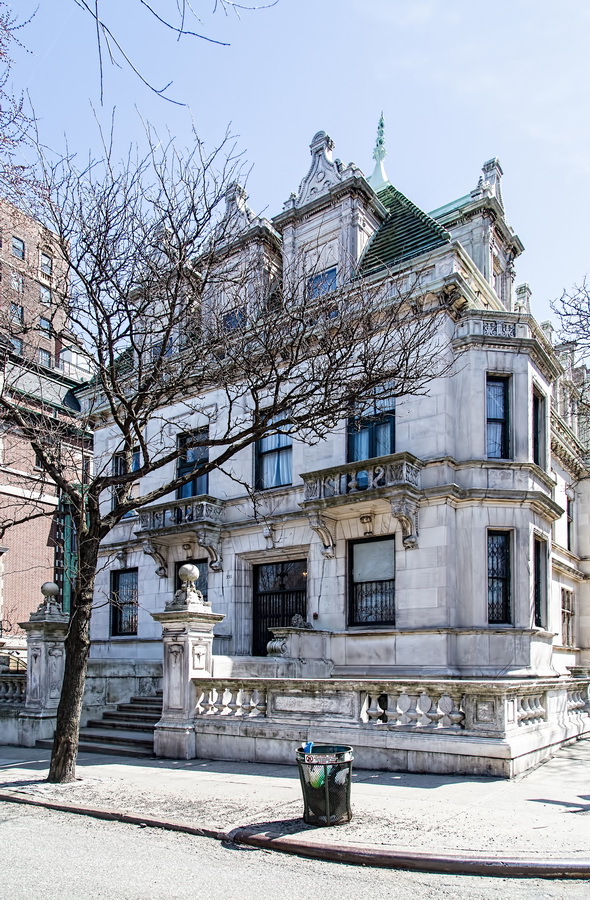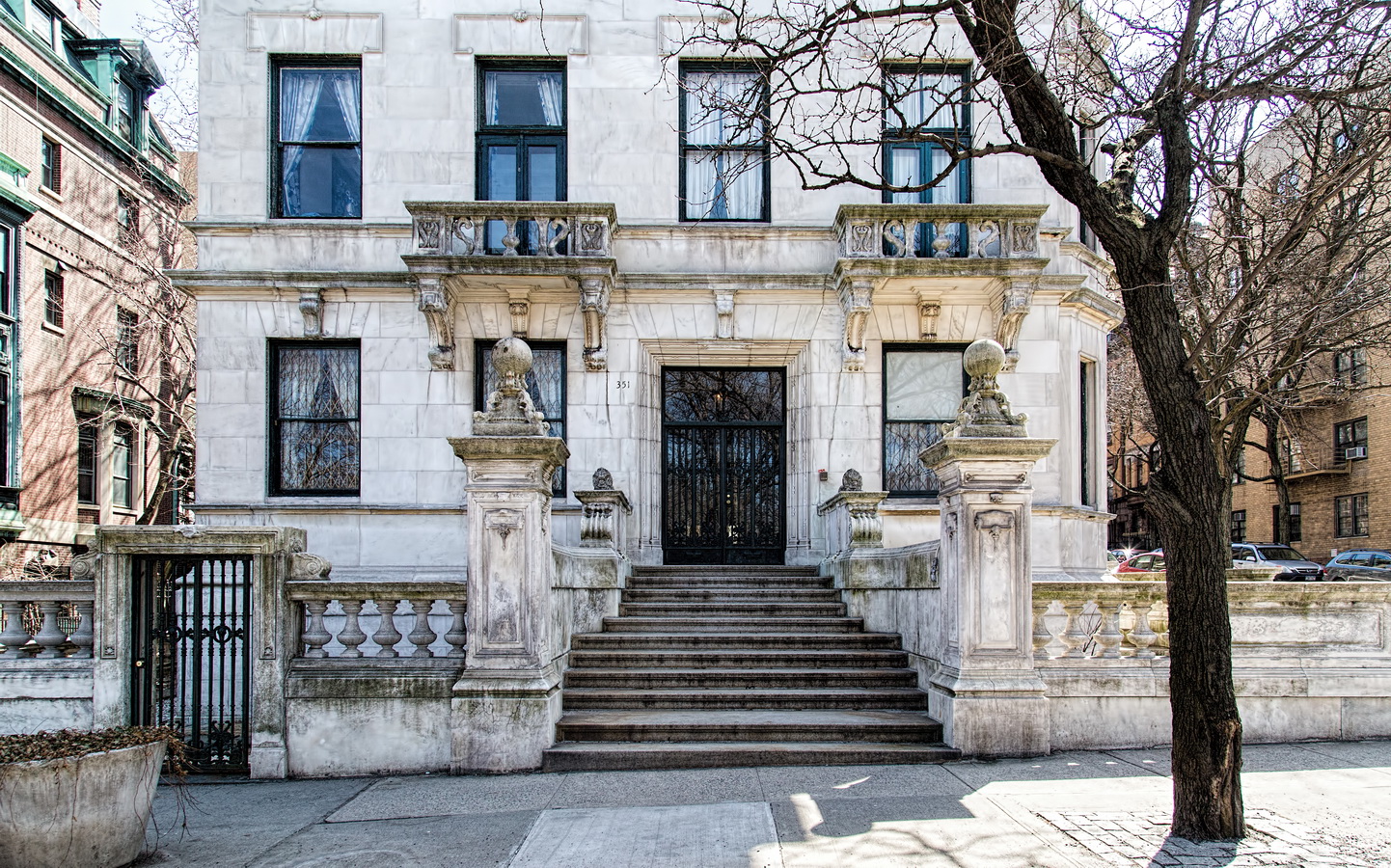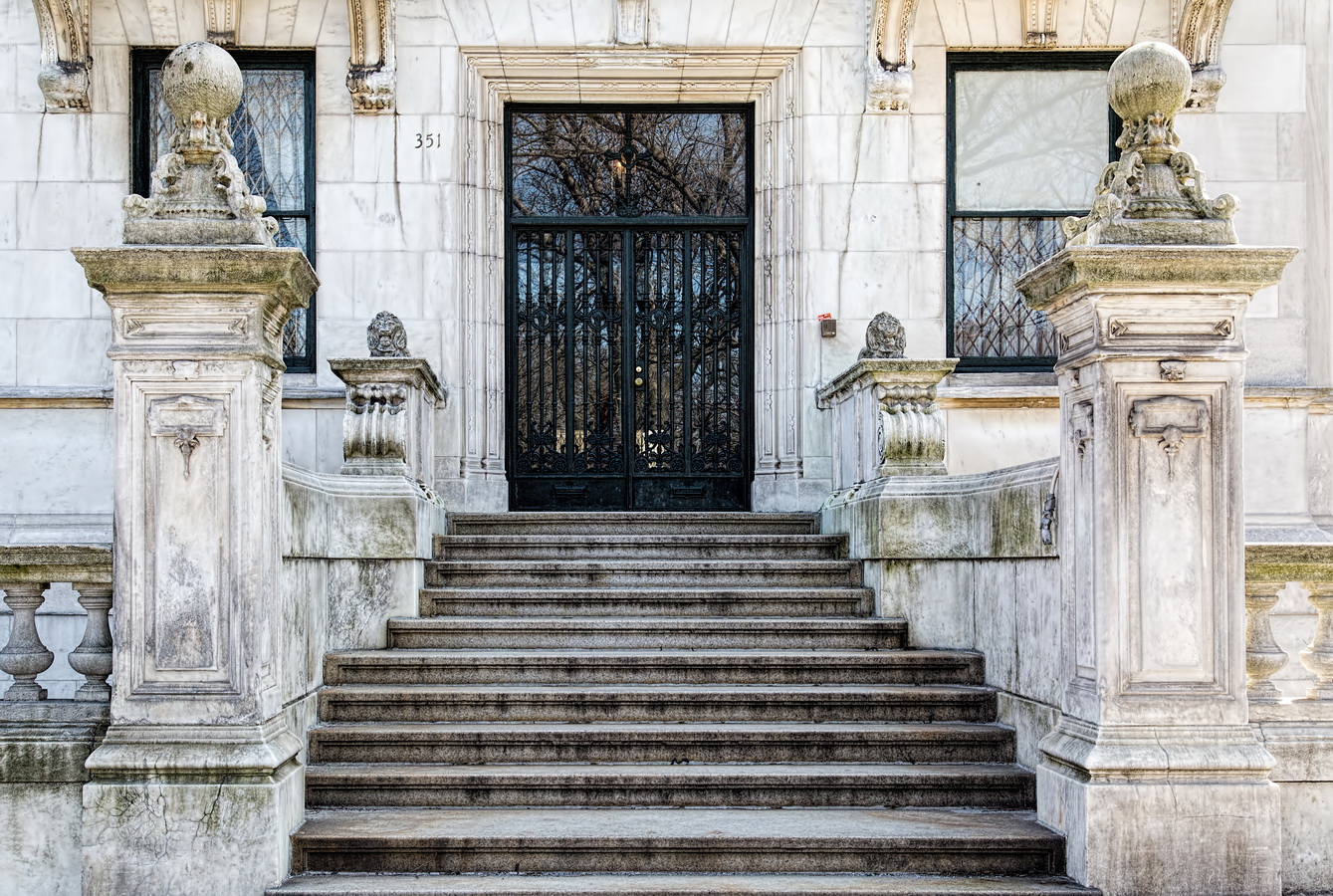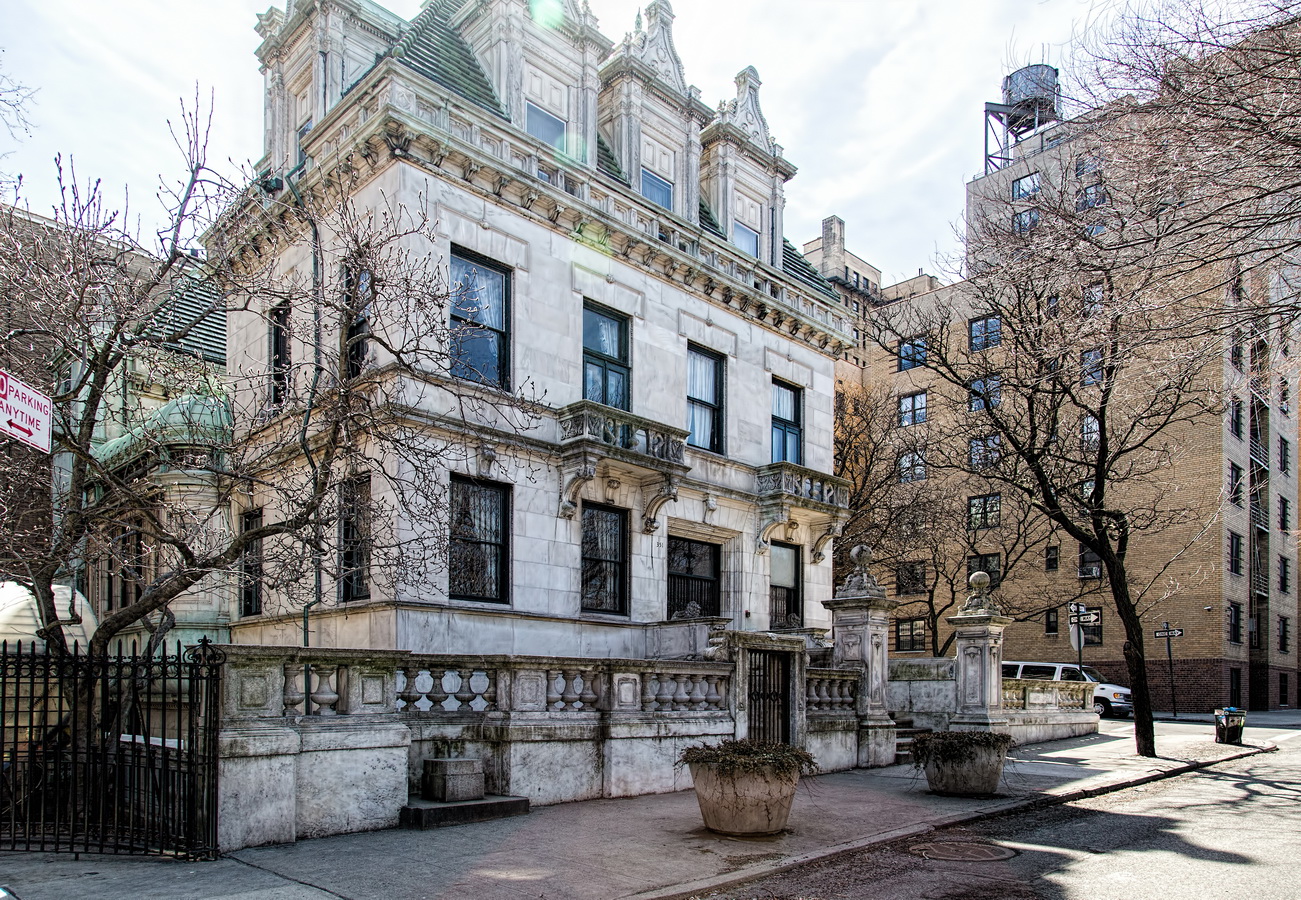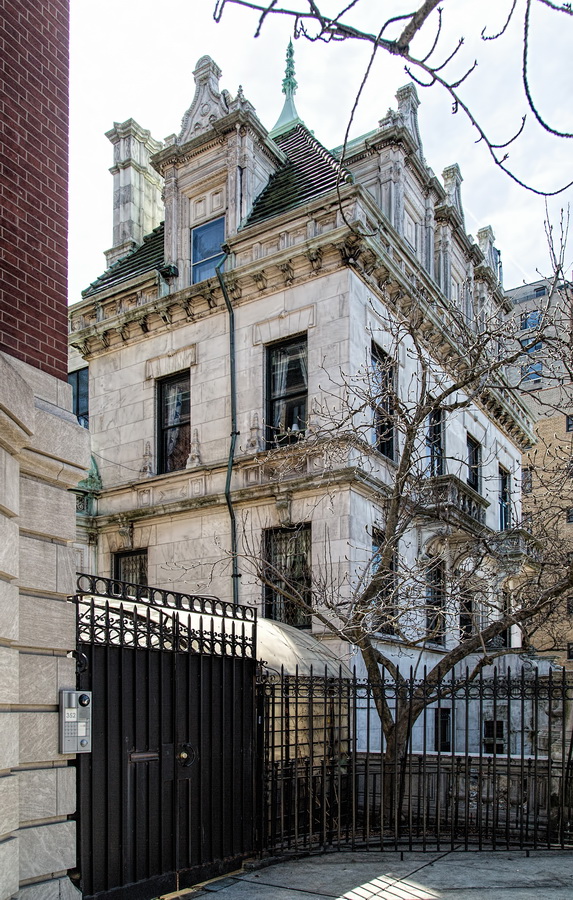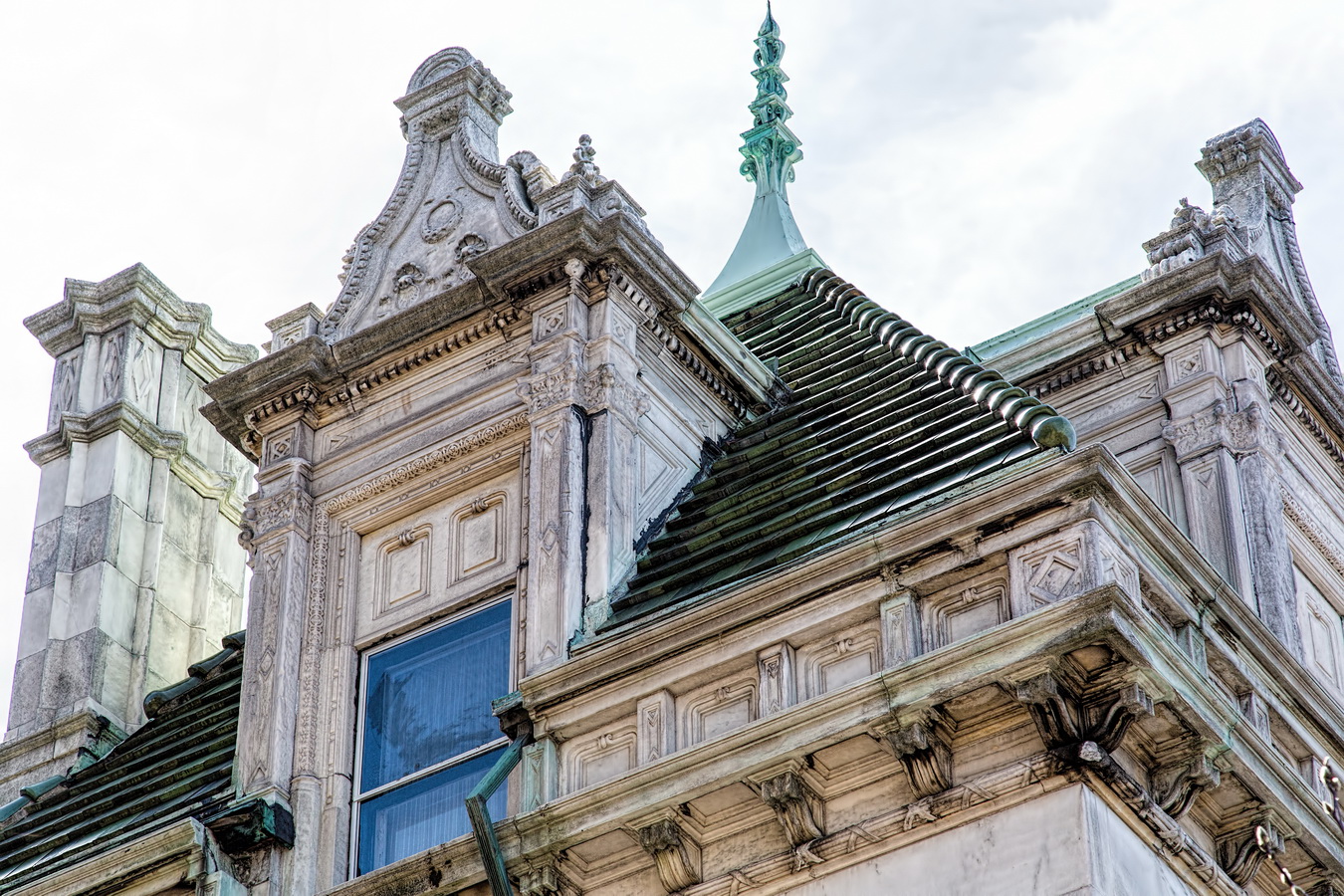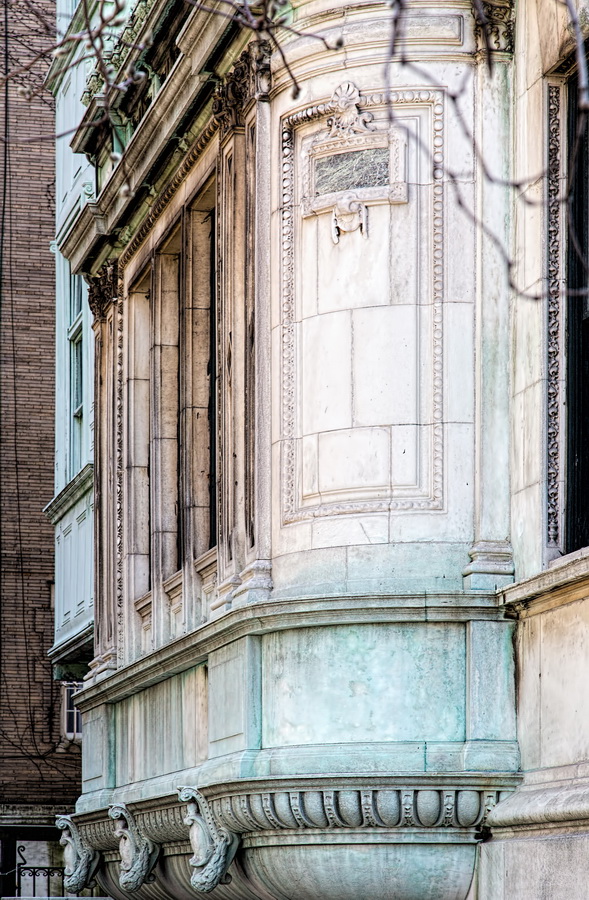Schinasi Mansion, the last privately owned freestanding mansion in Manhattan, has history and quirks as rich as its French Renaissance architecture.
The mansion was commissioned by Morris (originally Mussa) Schinasi, a Turkish immigrant who became wealthy from his invention of a cigarette rolling machine – and use of strong Turkish tobacco. The architect was none other than William Tuthill, known for his design of Carnegie Hall (1891). Despite his wealth, Schinasi refused to pay Tuthill – who sued.
Why Schinasi wouldn’t pay is a mystery – as is the secret tunnel (now sealed) from the mansion’s basement to the Hudson River.
Morris Schinasi lived in the house until he died in 1928; his family sold the mansion in 1930 and it became the Semple School for Girls, a finishing school.
Rosa Semple, the school’s founder, herself died in the mansion in 1956. Columbia University bought the property in 1960 and established “Children’s Mansion Day Care Center.”
Columbia decided to sell in 1979 – to Hans Smit, one of its own law professors, who wanted to restore and resell the home.
After nearly three decades of slow interior restoration, Hans Smit (who never lived in the house) tried to sell – but he died in 2012. His son succeeded in selling Schinasi Mansion in late 2013.
Schinasi Mansion Vital Statistics
- Location: 351 Riverside Drive at W 107th Street
- Year completed: 1909
- Architect: William Tuthill
- Floors: 5
- Style: French Renaissance
- New York City Landmark: 1974
- National Register of Historic Places: 1980
Schinasi Mansion Recommended Reading
- Wikipedia entry (1)
- Wikipedia entry (2)
- NYC Landmarks Preservation Commission designation report
- The New York Times The Marble Manor That Turkish Tobacco Built (May 4, 1997)
- The New York Times An Opulent Home, a Rich Past (April 3, 2007)
- The New York Times Secrets Revealed (February 16, 2012)
- Daytonian in Manhattan blog
- Old House Dreams blog
- Northattan: What You Get for $14 Million: A Mansion That Needs Millions More (October 9, 2013)
- Emporis database
